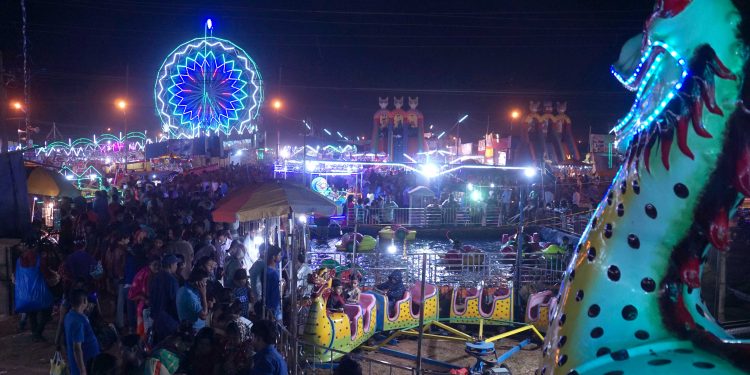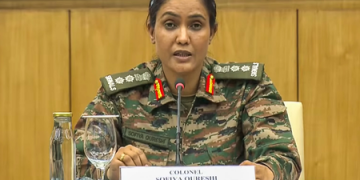India is a land of fairs and festivals, big and small. And we all love to soak in the festive atmosphere and celebrate joyous occasions with enthusiasm. Cuttack’s Bali Jatra, said to be the largest fair in Asia, held along the banks of Mahanadi is one such occasion. It commemorates the trade ties of the Kalinga empire (now Odisha) with Bali and other South Asian countries and celebrates the state’s maritime legacy. The Bali Jatra is so huge that it is said that, except parents, one can get everything here – from safety pins to high-end cosmetics, electronics to cars and cattle. The fair is visited by thousands of people from all over the country every year.
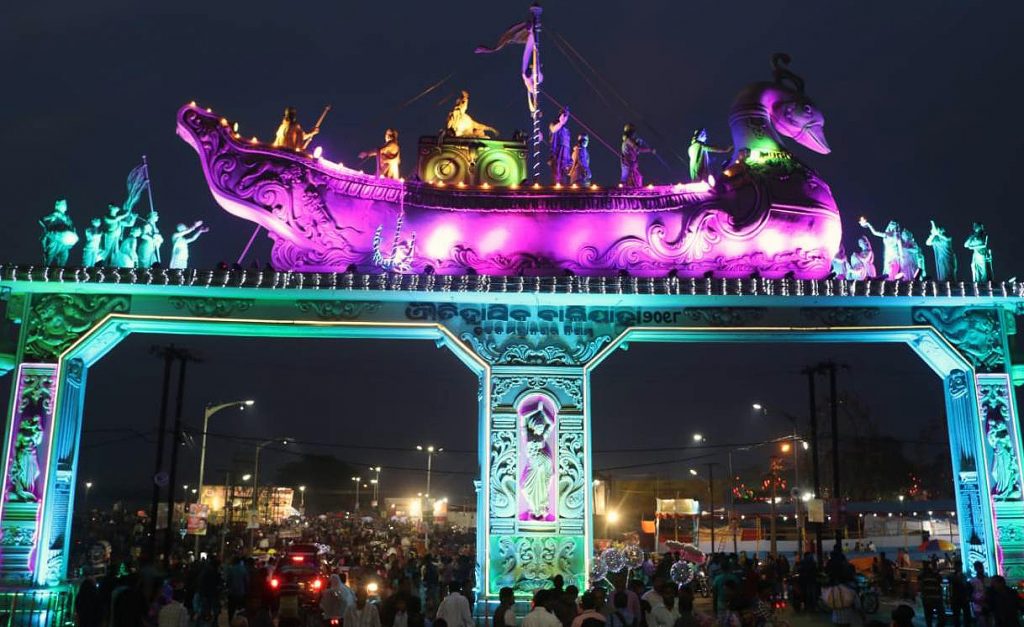
Bali Jatra, or voyage to Bali, marks the day when the Sadhabas, ancient Odia mariners, used to sail to the south-east Asian islands of Bali, Java, Sumatra, and Borneo (now part of Indonesia) and Sri Lanka for trade. These voyages also resulted in a cultural connect. To commemorate those journeys, the festival is observed each year from the day of Kartik Purnima, the full moon day of the Kartik month in the Hindu calendar. Aa Ka Ma Bai (Ashadh, Kartik, Margashirsha and Bai), the signature song sung by the Odias on this occasion, tells about the four months that were important for the merchants of Kalinga. This period was considered auspicious by the merchants to begin their voyage in ships because of the advantage provided by the direction of the winds.
Bali Jatra is also linked to Taapoi (see box) and traditional Odia rituals like Bhalukuni Osha or Khudurukuni Osha.
Brief history
By the end of the second century BC, Indian mariners had learned enough about the monsoon winds and ocean currents to prefer the southern route across the Indian Ocean to the islands of Indonesia. The vessels from Odisha, then Kalinga, did not sail directly to these islands. They used the north-eastern monsoon winds that blow from mid-November to sail down the coast to Sri Lanka. The merchants probably stopped over at Lanka for trade. From here, the ships could choose to sail down the Straits of Malacca towards Palembang and take the sea route to Borneo and Vietnam. Alternatively, they could head south hugging the western coast of Sumatra to Bali and Java. They also returned with arrival of the monsoon wind in Odisha.
The merchants of Kalinga were not the only ones making the journey to Indonesia. There were merchants from the Tamil, Andhra and Bengal coasts too. However, in the initial phase, the Sadhaba merchants of Kalinga seemed to have dominated the trade and commerce of eastern India, according to a study.
What makes Bali Jatra famous
Apart from the massive business opportunities for traders from across the country, there are several other aspects that play a significant role in giving Bali Jatra an iconic status among the fairs organised in the sub-continent. Orissa POST lists some of the features of the festival that make it unique.
Boost to economy
The fair offers a wealth of merchandise and people can find most things that they would like to buy. The fair plays host to several businesses that directly or indirectly help in the economic growth of the Odia people. The traders here make mega bucks without heavy investment. They find customers without any difficulty as the footfall at the fair is huge as compared to other places. The fair has paved the way for the development of a trade culture across the bay of the Mahanadi River in Cuttack. With the sales at the fair touching Rs 2 crore per day, it adds to the revenue collection of the state by way of sales tax. The Cuttack Municipal Corporation (CMC) also collects enormous fees from the traders and invests the funds for infrastructure development in the city.
Bali Jatra not only Scope for artisans
reflects the trading culture of the state but supplements the earning of artisans associated with it. The artisans make aesthetically crafted items which are sold at the Odisha Rural Development and Marketing Society (ORMAS) stalls. This boosts their livelihood and provides them a platform to reach a larger number of customers.
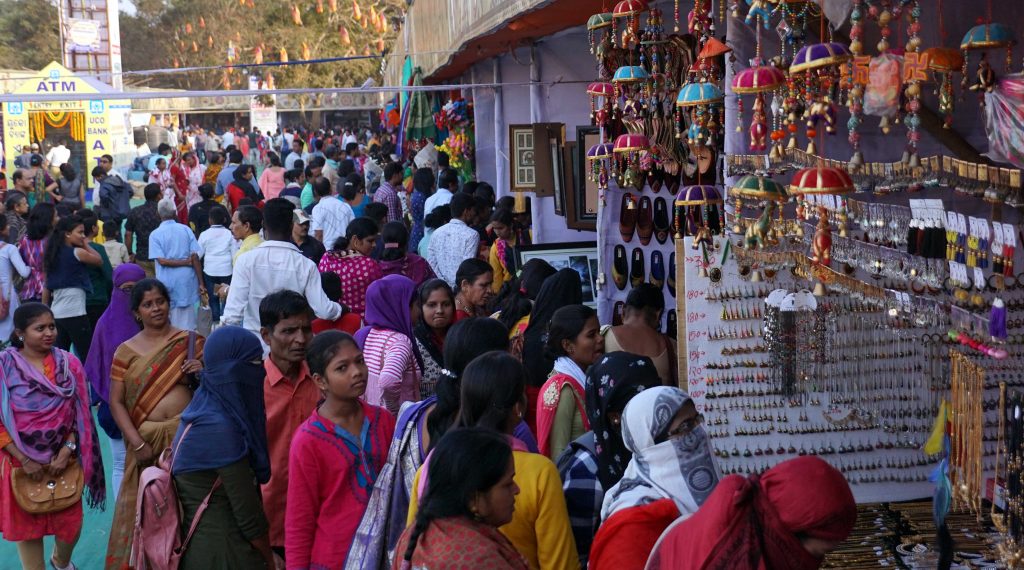
An ORMAS official said, “The stalls are dedicated to ethnic and rural crafts. Around 1,000-1,200 kiosks are expected to be set up for the 10-day long Bali Jatra this year. Nearly 1,400 artisans and self-help groups are taking part in the fair. The other major attraction at the fair is the food festival that offers delicacies from Rajasthan, Gujarat and Punjab, along with traditional Odia food.
Nomads make hay
Nomadic people take part in every large fair around the country, and Bali Jatra is no exception. They arrive in large numbers in Cuttack by train and settle down for a few days near the Bali Jatra fairground. They sell their handicrafts and other materials that they bring from fairs held in other parts of the country.
This is the only trade fair where hawkers are allowed into the grounds to sell their products by paying a nominal fee per day. They can put up their makeshift stalls without disturbing the visitors and the kiosks.
Insurance coverage
As a precaution, many kiosks at the fair are insured against natural calamities and fire. Shiba Prasad Behera, supervisor of the Bali Jatra committee, said, “More than 16 lakh people visited the fair last year and the officials expect the number to shoot up this year. Although there are two more places holding the fair, Cuttack’s Bali Jatra will never lose its glory. This year, another 20 acres have been added to the fairgrounds to accommodate 100 more kiosks as the demand for kiosks was high.”
More Jatras
Bali Jatra of Cuttack is not only one of the largest fairs in the country, it becomes a prominent tourist destination for over a week. The fair showcases the state’s rich cultural heritage dating back around 2,500 years. Cultural festivals are organised at the fair and artistes from the state as well as other parts of the country participate which adds to the popularity of the fair. Taking a cue from its popularity, Bali Jatra is now being organised in other parts of the state also to boost the trade and tourism sector.
Bali Yatra in Paradip
Paradip’s first Kalinga-Bali Yatra festival was held in the presence of a large crowd exceeding 20,000 people on Kartik Purnima, in 1992. The then Chief Minister Biju Patnaik inaugurated the festivities in the presence of Indonesian Embassy officials. The same day, November 10, INSV Samudra started sailing to Bali and touched coastal harbours like Visakhapatnam, Chennai, GNI (Andaman& Nicobar Island), Sumatra, Jakarta, and Bali Padang during its journey. It reached Bali on January 30, 1993.
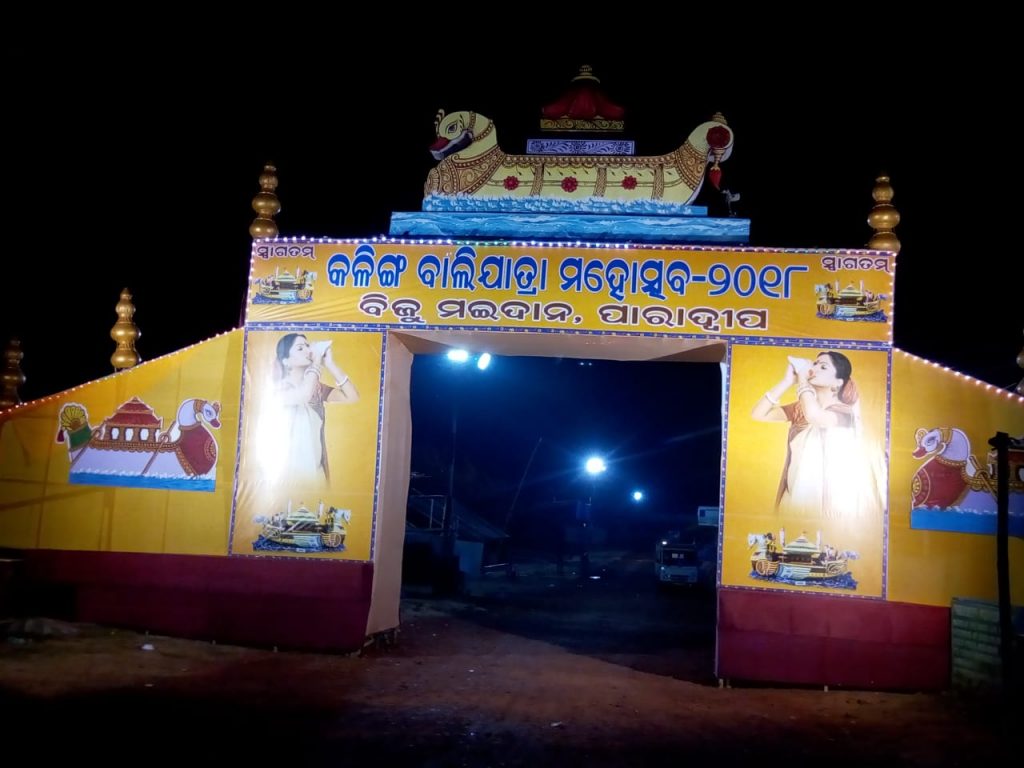
The “Kalinga-Bali Yatra 1992” was a glorious attempt to bring back into focus the historical and cultural trade links between Odisha and the islands of Bali and Java. The festival is very popular among the people of Jagaitsinghpur and nearby districts.
Bali Yatra in Bhubaneswar
After the success of Bali Yatras in Cuttack and Paradip, Bhubaneswar is holding its first Bali Yatra this year. Though efforts had been made to hold a festival last year, it could not take place as the required permissions were not received from the Commissionerate of Police.
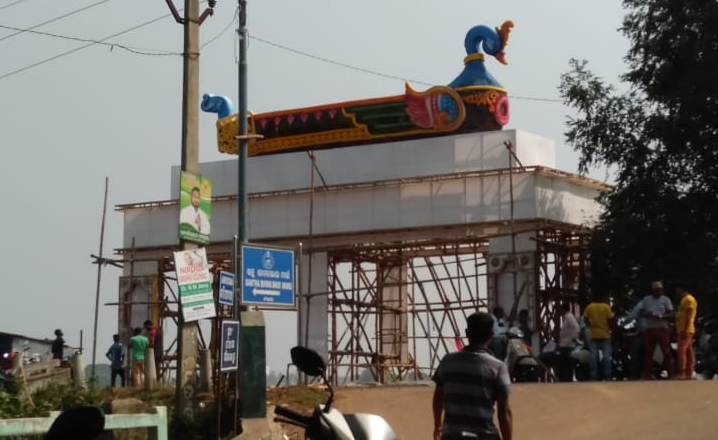
The Bali Yatra was inaugurated on the Kuakhai riverbanks at Patia Bandha near Jaripatna November 23 and will run until November 30. The Bhubaneswar Bali Yatra Committee office was inaugurated by the local Bhubaneswar (North) MLA Priyadarshi Mishra. People from around 72 villages in 10 panchayats along with over 45 Puja Committees have come together to make the fair held in a 150-acre fairground a success. The fair features around 500 stalls, two stages, various types of swings and cultural programmes every evening.
Sangram Rout, a resident of Bhubaneswar, said, “It’s a great achievement for the city as for the first time the people of the city can be part of Bali Yatra along with their families. No doubt Bali Jatra at Cuttack is unbeatable, but the rush may lessen with the evolution of the trade fair in the capital city.”
Some hurdles
In July 2016, the National Green Tribunal’s east zone bench asked the Cuttack Municipal Corporation to ensure that solid waste, including construction debris and household waste, were not dumped on the bed of the Mahanadi River, which is a major impediment for the civic body in arranging the fair every year.
Pradipta Kumar Satpathy, additional in-charge, Bali Jatra Committee, said, “The Corporation is aware of the instructions issued by the tribunal and adequate measures have been taken to ensure that the river is not polluted during the mega festival. The civic body has outsourced solid waste management during the festival. We have dustbins at each kiosk and special squads are there to check and penalise violators for littering.”
“As use of plastic has been banned in Cuttack, the festival site is declared a plastic-free zone by the authorities. CMC has banned the use of polythene carry bags and plastic cups used for serving tea, soft drinks and drinking water at the grounds and is promoting the use of recycled paper carry bags to keep the fair free of plastic. Besides, to popularise biodegradable packaging materials and carry bags, these items would be showcased in at least a dozen kiosks by the civic body and the Odisha Rural Development and Marketing Society,” he added.
Fable of Taapoi
There were seven brothers in a prosperous Sadhaba family and Taapoi was their only sister. The brothers used to shower their love on her. One day, the pampered Taapoi demanded a moon made from gold. Her parents tried to fulfil her demand. However, her father died when the moon was half done, and her mother passed away when the moon was completed. With the family facing financial hardships, the brothers set out on a voyage to distant lands for trading. Before leaving, they instructed their wives to look after Taapoi well. But soon, the wives, influenced by a Brahmin widow’s bad counsel, started torturing Taapoi. She was made to live on leftover food and sent to graze goats in the forest. Despite her sufferings, Taapoi waited patiently for the return of her brothers. Though the youngest sister-in-law was kind to her, she couldn’t help her much. Taapoi kept praying to goddess Mangala for her brothers’ safe return. Her prayers yielded results as the brothers returned safely to shore. Meanwhile, they heard a girl crying and found that it was Taapoi who was searching for her missing goat. She had been driven out of the house by her sisters-in-law. The angry brothers summoned their wives to the shore and asked Taapoi to cut the nose of their wives as punishment. But the kind-hearted Taapoi prayed to the goddess to restore the noses of her six sisters-in-law. As Taapoi was waiting for her sailor brothers to return from the voyage, this legend symbolises the ceremonial send off to the merchants ahead of Baliyatra and their safe arrival.
Some interesting facts
- In Bali, three deities, represented by masks which bear resemblance to Jagannath, Balabhadra and Subhadra of Puri Srimandir in Odisha, are worshipped.
- While Bali Jatra marks the beginning of a yearly journey to Bali from Odisha, a festival held in Bali commemorates the return of the traders to Kalinga.
- Married women of Odisha still assemble on the river banks to float miniature boats called boitas into the river on Kartik Purnima to commemorate maritime tradition.
- Mother is called Boo (bu) in Indonesia like Bou in Odia and father is Bopo (in Javanese) or Bapa (in Balinese) as in Odia.
- Patata designs and the special type of tie and dye weaving for which Bali is known, resemble Odisha’s Sambalpuri designs and style of weaving.
Decline in thunkapuri sales
It is said that a visit to Baliyatra is incomplete if you have not savoured a plate of thunkapuri at the fair. It is one of the popular items of the festival and eaten with traditional accompaniments such Chhena Tarkari (Paneer curry). However, thunkapuri stalls have registered a sharp decline in sales over the years despite heavy footfall.
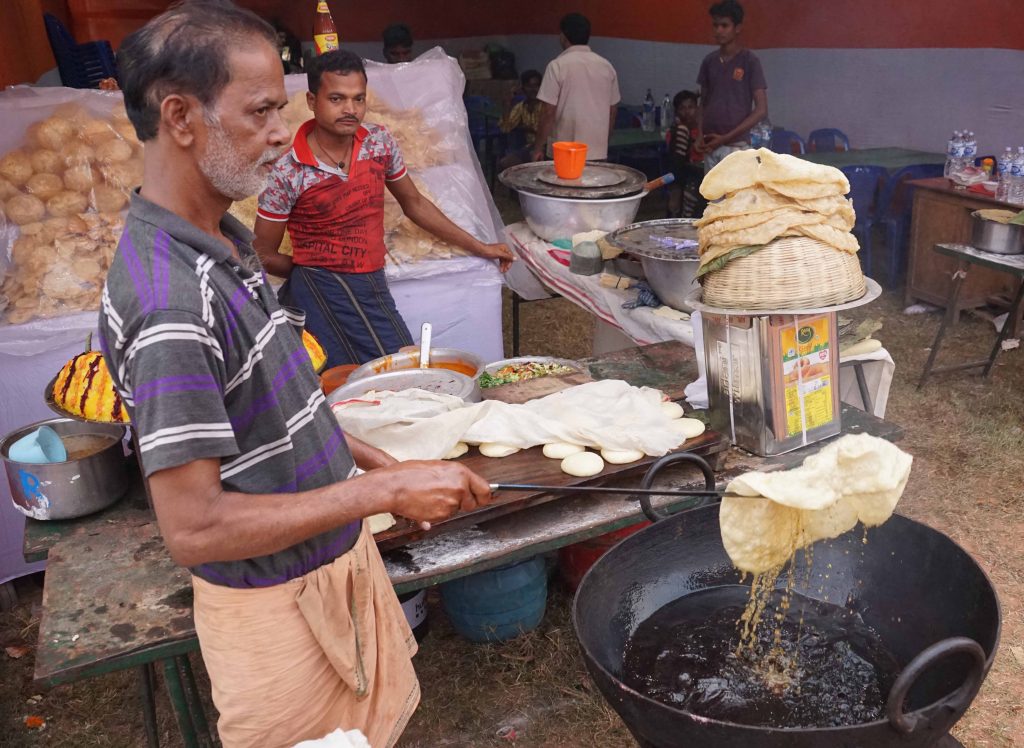
Kailash Sahoo, the manager of a stall said, “I have been a part of the fair since 1997. Thunkapuris were in great demand when I first joined this stall. The daily turnover of our stall often touched Rs 70,000. But the craze of this traditional delicacy has been on the decline as the customers now prefer fast foods. This has forced us to serve a variety of fast foods to our customers at our stall along with thunkapuris.”
SOYONG, OP

